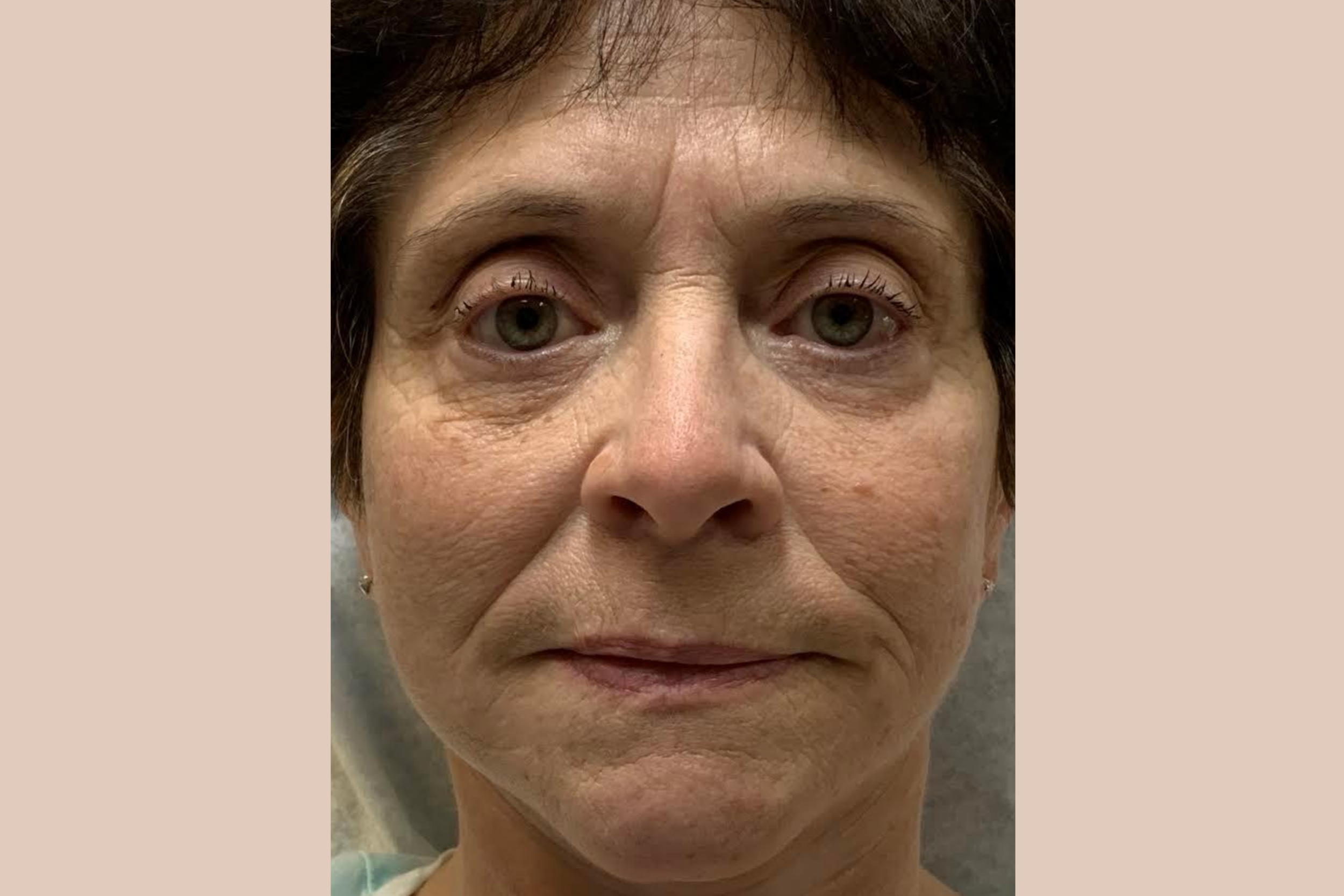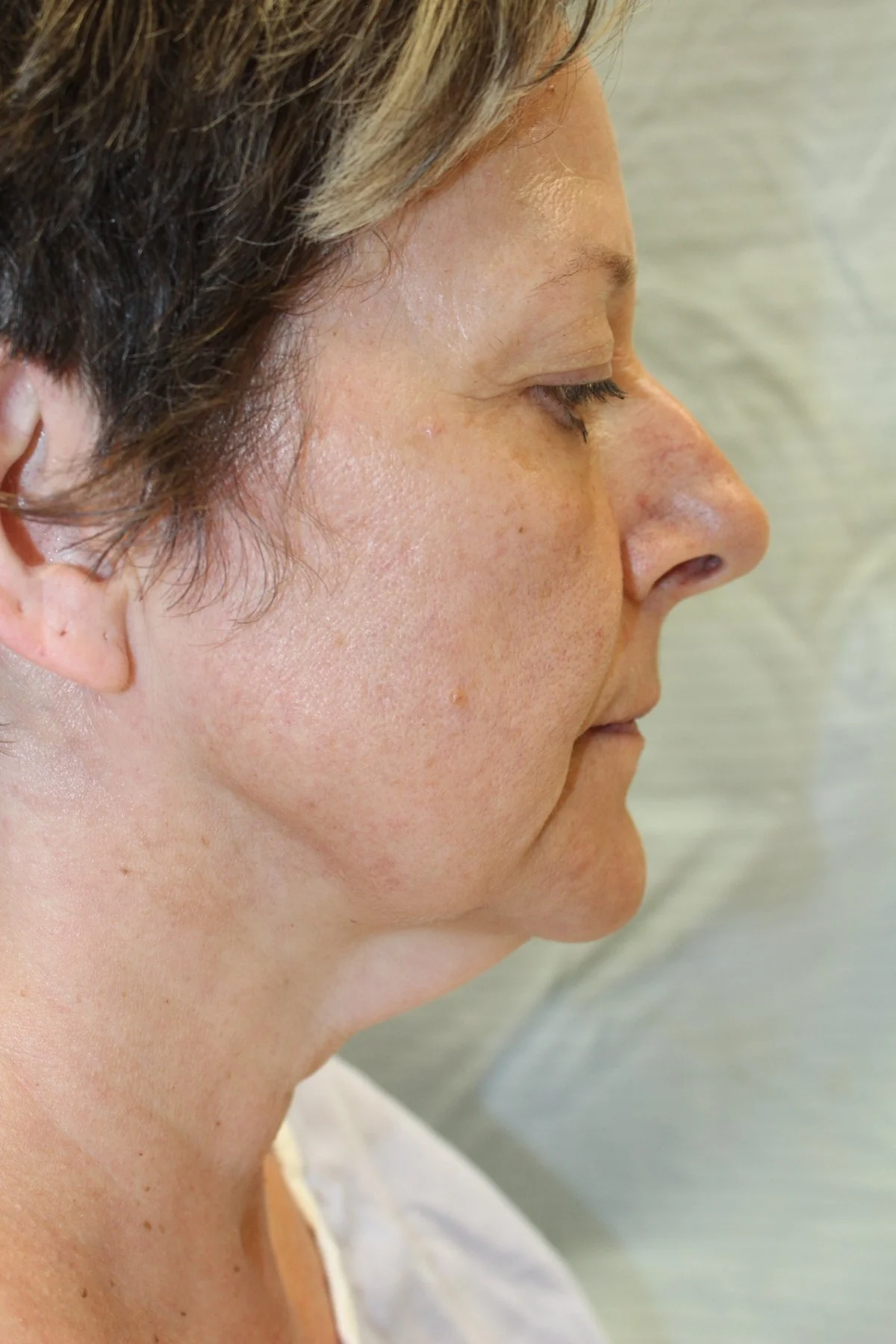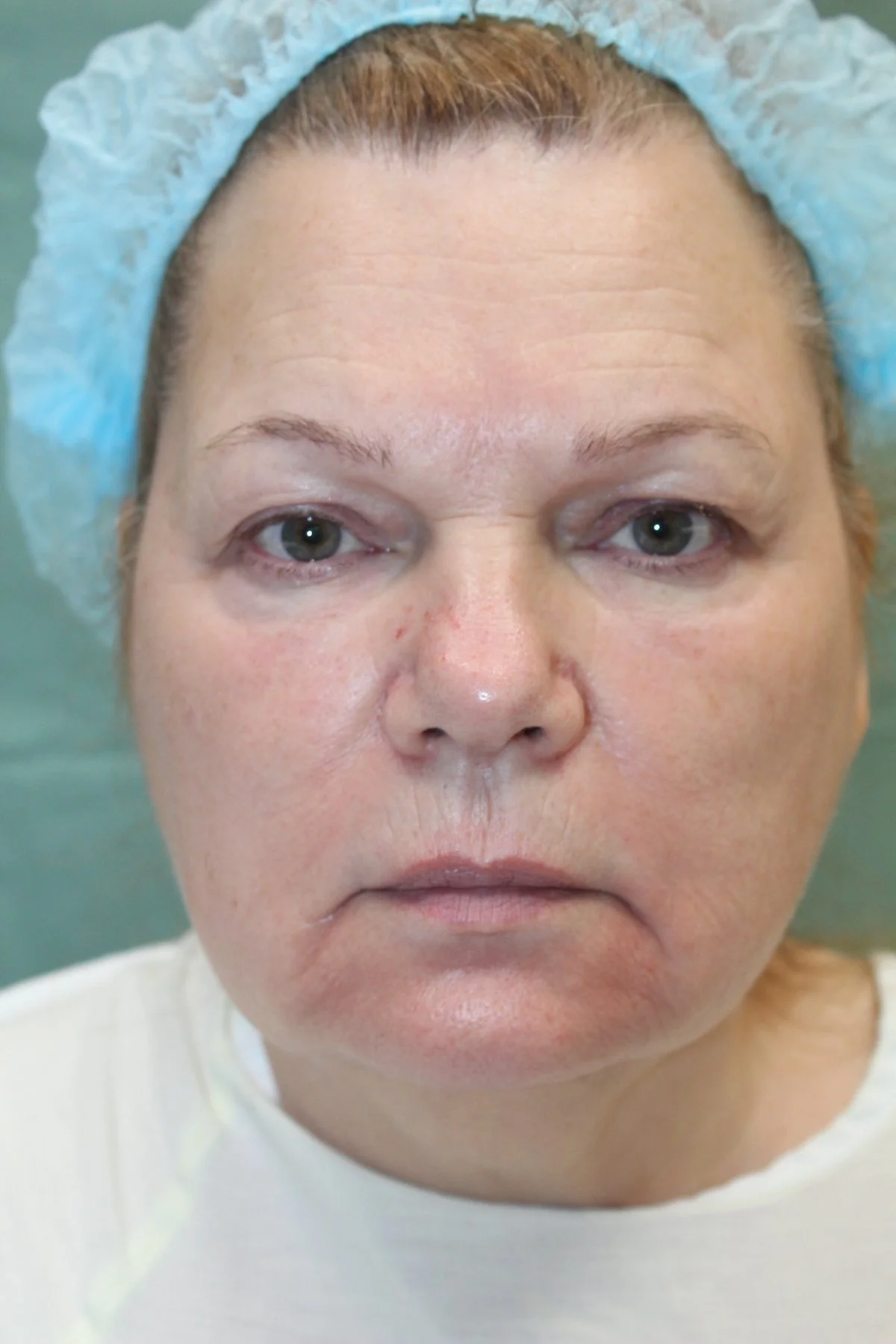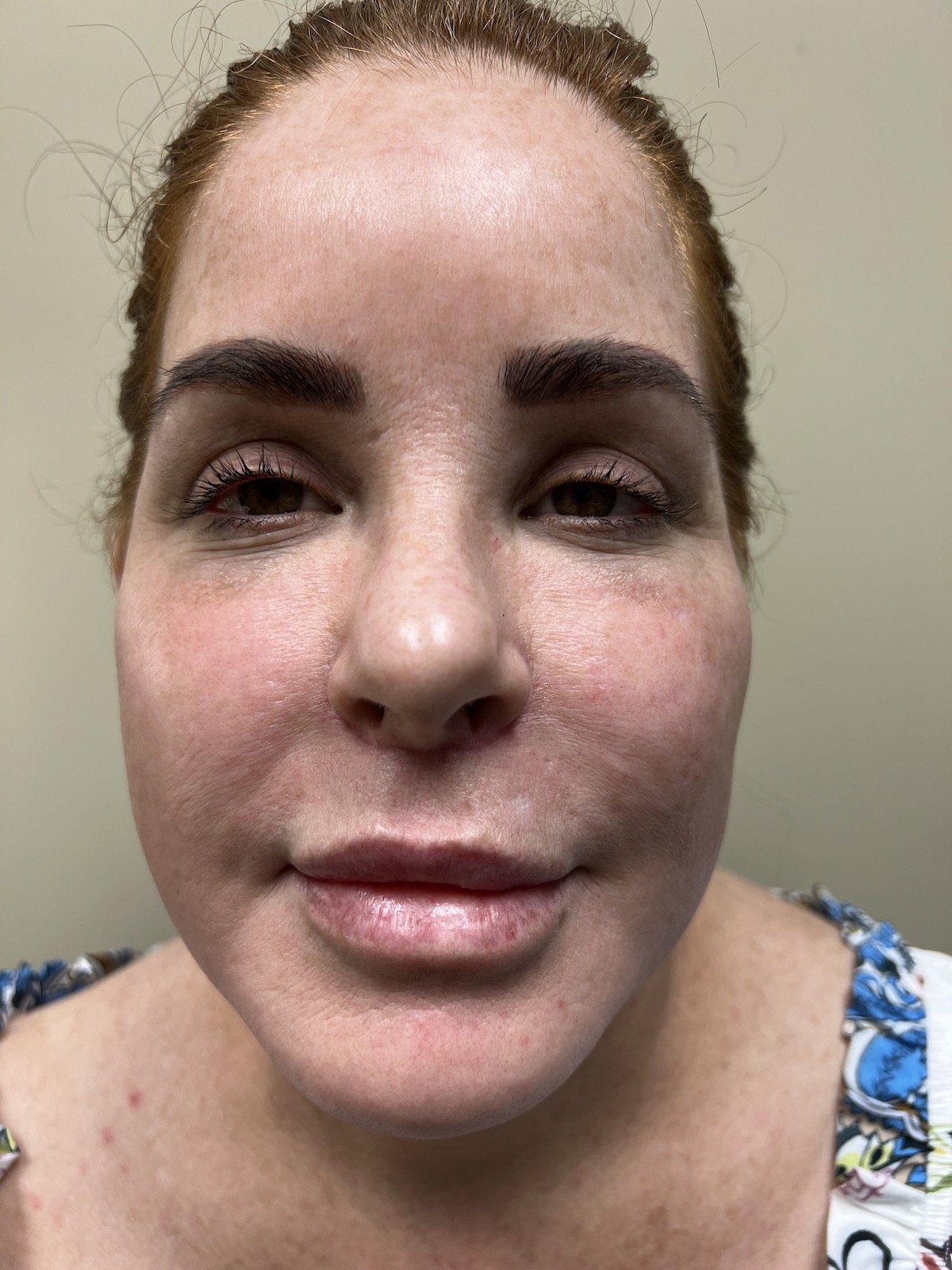
Face & Neck Lift
*DISCLAIMER: THIS SITE CONTAINS GRAPHIC & SURGICAL IMAGES THAT MAY BE DISTURBING TO SOME VIEWERS.
THIS SITE IS INTENDED FOR INDIVIDUALS OVER THE AGE OF 18.
**None of the images on this site have been enhanced or photoshopped.
Patient A - 69 Years Old


Patient B - Pre-operative and 12 weeks Post-Operative Face Lift


Patient F - Pre-operative and 3 months Post-Operative FaceLift & Brow Lift


Patient E - Pre-Operative and 1 year Post-Operative Face Lift Surgery and Lower Blepharoplasty Surgery


Before & After Photos
*Tap a patient image to enlarge & view the full series of pre and post-operative images.
Before the Surgery:
+ What is a Facelift?
This is a surgical procedure done most often under intravenous sedation together with local anaesthesia. The surgery is done to reverse the gravity changes that occur with facial aging.
+ When is a Facelift done?
Most often this is a done as a person gets older and gravity begins to change the appearance of the lower half of the face and neck. Occasionally a younger person, who has suffered significant facial scarring following acne (*Please See FAQ Post Acne Facial Scarring), will benefit from the skin tightening and smoothing effects of a facelift.
+ What are the effects of gravity on an ageing face?
To review the aging features of the upper half of the face including the Brow, Eyebrows, Upper and Lower eyelids.
*Please refer to the FAQ under each of these heading.
The lower half of the face refers to a level below the cheek bones on the face and includes the neck.
Gravity ageing to the lower half of the face includes:
The folds around the cheek at the nose level (nasolabial folds) drop and start to fold.
The normal cheek fullness starts to empty and hollow because the fat tissue descends to create a “jowl” or fatty bulge along the jaw line.
This produces downward pressure around the mouth creating folds and creases called bitterness and marionette lines
The tone and support of the neck muscle (platysma) create cords of muscle in the neck
Often between these cords there is an excess fat collection and with the loose skin creates a skin/fat waddle, of tissue often called a “turkey gobbler “ deformity
The skin over the neck and cheek loosens creating a wrinkled accordion look to the skin.
+ What does a facelift “Not “ fix?
The fine wrinkling in the skin around the upper and lower lips is not corrected using a facelift procedure. This skin ageing is addressed using either non-surgical (injectables) or surgical techniques (dermabrasion, chemical peels or laser resurfacing).
The Operation:
+ What is a Facelift?
The surgery to improve gravity facial ageing is called a Facelift (Rhytidectomy).
The surgery is done most often under local (freezing) anaesthesia with intravenous sedation. Much less commonly it may be done under General Anaesthesia.
The surgery is done in a private surgical facility adjacent to Dr. Giuffre’s office.
Please see https://www.meadowlarksurgicalcosmetic.com
Immediately before the surgery, with the patient sitting, a photograph is taken.
The surgery is then planned using a surgical marker on the face.
With the patient lying, medication is put through the intravenous to sedate the patient. The local freezing is then injected (similar to a dental freezing). The freezing will often last throughout the entire day.
Please describe the surgery:
A short scar facelift (MAC lift) is used where only the cheeks and jaw line are rejuvenated with no neck rejuvenation. The incision is modified and is shorter.
A facelift addresses a composite of three tissues:
- fat
- muscle
- skin
After the incisions are made, excess fat is removed from the neck and chin area.
Neck and cheek muscles are then tightened.
The neck and cheek skin is re-draped over the face, removing any excess skin.
Fat graft (see FAQ Fat Graft) may be injected into the hollow areas of the face to provide increase volume where needed.
Incisions are closed with both dissolving and non-dissolving sutures.
If the neck has been rejuvenated, there is a drainage tube placed in the area. The drainage tube, along with all bandages, are removed the next day.
The patient is then seen at day 5 and day 10 to have all the sutures removed.
The patient returns to see Dr. Giuffre in the office at week 6 for a follow-up assessment, and to review the pre-operative photograph and the post-operative result.
The surgical time is approximately 2 1/2 – 3 hours
Please see https://www.meadowlarksurgicalcosmetic.com, and select face/neck lift from the pull down menu.
+ What happens next?
After the surgery is completed, the patient is kept in the recovery room for an hour before they are escorted home by their ride. The patient cannot drive home and will need a ride from a friend or relative.
The patient is sent home with a large bandage and a small drain. The patient returns the next day to have all bandages removed, along with the drain.
Then the patient may shower.
On day 5, the patient returns to have some of the sutures removed. The patient returns on day 10 to have all the remaining sutures removed.
There will be bruising and swelling for 7 – 10 days after surgery. The amount will vary from patient to patient. The use of Aspirin, Advil and Herbal supplements are discouraged as these products will increase the bleeding and bruising during and after surgery.
Two weeks off work is recommended.
Avoiding heavy straining and heavy exercise for 6 weeks post operatively is recommended.
Male patients who wish to shave their facial beard should avoid a rotary electric razor for 6 weeks.
+ Can other procedures be done at the same time as a facelift procedure?
Procedures that can be done at the same time as the facelift surgery include:
- brow lift surgery
- upper eyelid surgery
- lower eyelid surgery
skin rejuvenation procedures around the mouth area which include:
- chemical peeling
- dermabrasion
- laser resurfacing
+ I have heard of the ”noon hour facelift or the thread lift”. What is this? Does it work?
This technique is an attempt to tighten the muscle and skin of the face by threading a non-dissolving nylon thread under the skin through the cheek area and then tightening the thread to draw up the skin and cheek, attempting to reverse the effects of facial gravity.
This is usually done by non-Plastic surgeon cosmetic practitioners.
This technique has a number of risks. The beneficial effect of the procedure is short lived, lasting for 6 weeks to 3 months, before the effect of this pull is lost and the gravity changes to the face recur.
Dr. Giuffre does not recommend this procedure.
The Risks:
+ The standard surgical risks for any surgery apply:
With any surgery there are surgical and anesthetic risks.
Aside from the rare risks of an anesthetic event, some of the general and specific surgical risks for this procedure would include:
- Excessive swelling and bruising
- Scarring
- Infection
- Sensation change to the cheeks for up to 3 months
- Discomfort: this is mild to moderate. Most patients may require pain medication for up to one week after surgery. Avoid driving a vehicle if you are taking narcotic medication.
- Asymmetry
- Bleeding (hematoma)
- Poor healing especially in patients who smoke
- Muscle weakness around the eye or the mouth (facial nerve bruising or injury)
- Time off work and exercise
*This list is not complete.
During the consultation with the patient, Dr. Giuffre will outline and explain each of the risks in detail.
+ How long does the surgical improvement last?
With the exception of the younger patient having surgery for acne facial scarring who may require repeat surgery every 5-10 years, most patients in their forty’s and onward will often enjoy the results of the surgery for many decades. Facelift surgery does not change the inherited ageing of a patient which is most often determined by their inheritance (95%). 5% of facial aging is controlled by environmental factors, such as sun and wind exposure, and choice, such as smoking. A patient looking at their parents and grandparents, and how they age, is a good reflection of what will happen to them as time passes.
After facelift surgery, the patient’s time clock is rolled back 10 – 12 years. They will maintain this as they age. For example, a patient aged 55 yrs. old will look 45 yrs. old or younger after a facelift. When they are 65 years old, they will look 55 yrs. old or younger.
The Followup:
+ How often do I need to come back for a checkup after the surgery?
Postoperative visits include:
- a 24 hour post op visit for the bandage and drain removal
- a 5 day and 10 day post op visit to have the sutures removed
- a 6 week visit in the office to review the preoperative photograph and the surgical result.
If there are any patient concerns, Dr. Giuffre provides his home phone number for patient's direct access.
After the 6 week visit, if there are any future requests for an appointment, they are made directly with Dr. Giuffre office and an expedited visit is arranged.
Financing:
+ Will AHS (Alberta Health Services) cover Facelift surgery?
Facelift surgery is not covered by Alberta Health Services.
+ Can I finance the costs of the surgery? How do I do this?
Dr. Giuffre does not provide in house financing for cosmetic procedures.
There are a number of companies across Canada that will finance cosmetic surgery, similar to car financing or mortgages.
Please refer to the links provided for this information.
Dr. Giuffre has no financial or business relationship or affiliation with any of these companies.
+ What about having my Cosmetic Surgery in another country where it is cheaper?
There is a current trend to have surgery out of your country where the surgery may be cheaper.
We call this tourist surgery.
There are a number of additional risks associated with tourist surgery, which include:
The surgical skill, experience, licensing and education of an unknown surgeon.
Canada has very strict rules and requirements to be a licensed Plastic Surgeon (FRCS(C)) in our country. Your Plastic Surgeon has completed an undergraduate degree (4 years), an MD degree (4 years), a Fellowship Degree in Plastic Surgery (5 years) and often a post Fellowship (1-2 years).
A “friend” is not a good reference, nor is glitzy advertising.
The safety, sterility and equipment quality, including anaesthesia machines in the hospital or private surgical suite could be questionable; this may lead to increased risk of infection and anaesthetic risks.
Post operative care is limited to the time you spend in their country.
If you have a complication, to see your original surgeon, you will have to fly back to where your procedure took place, or see a new surgeon in your own Country.
If you have an unsatisfactory result, you will have to fly back to see your original surgeon or find a new Surgeon.
The cost of the repair may exceed what you originally paid, and the final result, fixing a mistake, is often not as good as it could have been had the surgery been done correctly the first time.
After accounting for the accumulated costs of the air travel, hotel, surgery and postoperative care, the perceived cost savings may not be significant.
If you have a severe, life threatening complication, Alberta Health Care will cover the medical costs for your care.
Correcting the reconstructive problem, as a result of the complication, would be the patient’s financial responsibility.
“Life is full of choices; your character reflects those choices.”













































































